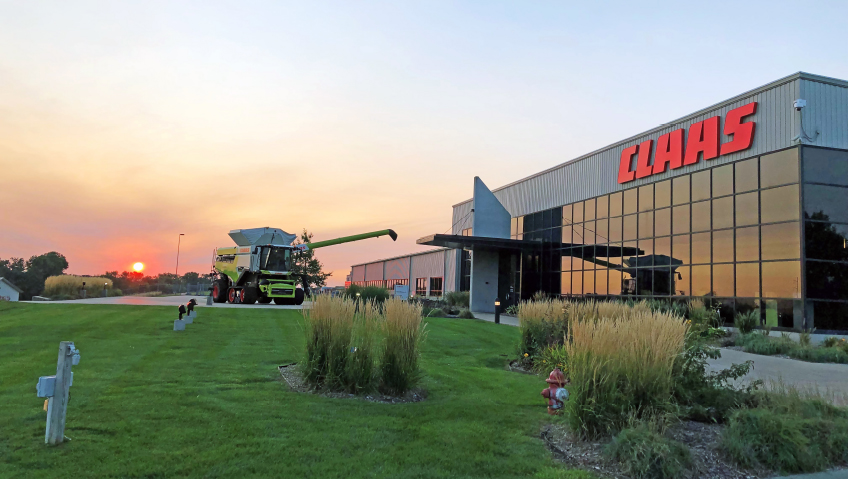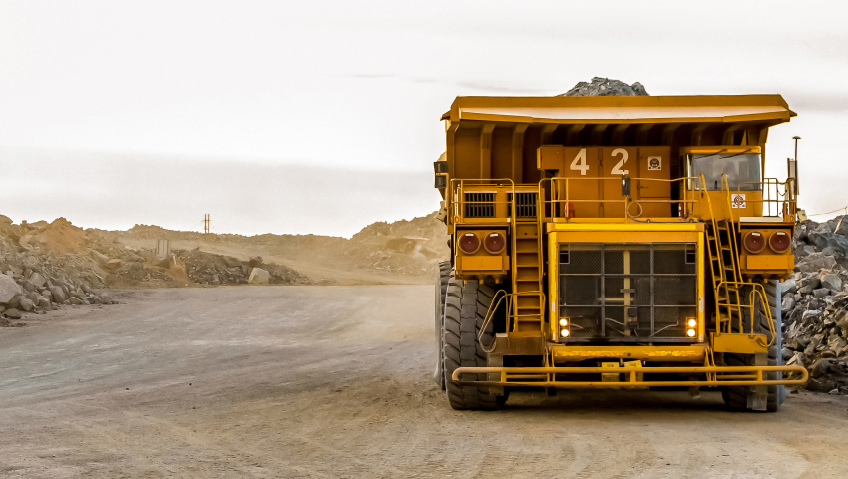In an era marked by changing climates and a rising global population, the world’s food producers need new tools to raise efficiency and output. From its U.S. headquarters in Omaha, Nebraska, CLAAS of America is dedicated to its mission of improving efficiency and reducing losses using over a century of industrial experience. With new machines, new facilities, and new leadership, CLAAS and its North American division offer the latest in farming machinery.
Named after founder August Claas in 1913, the company has expanded its reach globally to more than 160 countries across five continents. But while the group’s harvesters first reached North America in the 1950s, the CLAAS of America sales unit was formally organized in 1979. Today, there are two operational units in the U.S.; CLAAS Of America Inc. handles sales, while CLAAS Omaha Inc. manages the production of combines for the North American market.
We spoke with CLAAS of America President and General Manager, Eric Raby, in March 2018. More than three years later, it is a very different world but still one that requires agribusiness. Raby and CLAAS Omaha’s new President, Matthias Ristow, laid out the company’s groundwork moving forward. Ristow, who has more than seven years of experience with CLAAS, has recently taken over responsibility at CLAAS Omaha and is supervising the company’s production of new cutting-edge line of combine harvesters.
Now in their second year of production, the company’s LEXION 8000-7000 Series harvesters boast the highest capacity in their class combined with unprecedented fuel efficiency. The machines harvest an average of 20.3 acres per hour, which the company calculates to as much as 31 percent higher than other harvesters. This is largely due to its patented APS SYNFLOW HYBRID threshing and separation system. Pre-separating up to thirty percent of the grain before it even reaches the threshing units and twin separation rotors, the unique system provides higher output using less fuel while not damaging the crop itself. “This is a completely new range of combines, from top to bottom,” Raby remarks. “You never think that combines can any get more capacity or more efficient, but we find ways to do it.”
In addition to its harvesting efficiency, the LEXION DYNAMIC POWER system helps farmers reduce fuel costs by being up to thirty percent more fuel-efficient than competitors. This helps the machine harvest up to 7,240 bu/hr and unload more than five bushels per second. Finally, a DYNAMIC COOLING system and central lubrication system help keep the engine and all moving parts running smoothly, reducing maintenance and downtime.
The new LEXION is merely the newest addition to CLAAS’s extensive product line, which extends from combine harvesters, forage harvesters and tractors to mowers, tedders, rakes, and square and round balers. The new harvesters also sport the company’s seed-green color. Raby hopes this will reinforce the company brand beyond traditional marketing.
As Raby described, the company is in the midst of a transition that began before the pandemic. For the past five years, he estimates, CLAAS has been increasing its distribution network. The result, he says, is more cohesive; far from increasing complexity by adding more vendors and products, the practice actually helps simplify the distribution network—in defiance of traditional logic. “It’s really easy to make things complex,” he says. “It’s more difficult to make things simple.”
By diversifying the distributor network, the company offers a closer relationship with its dealers and end-users, superior to a simple transactional relationship. Raby says the results have been positive, with no signs of abating. “We’ve seen good growth in the past few years, and it looks like the current trajectory, especially with current trends in the market, will continue to propel us forward.”
This growth may well help CLAAS continue to diversify its product line. Raby points out that, while CLAAS of America’s product line is extensive, it does not yet supply equipment for planting, tillage or spraying—all vital components of the farming process. Yet he and the leadership team hope that, by expanding its distribution network, the company’s suppliers may be more amenable to this development.
“Over time, not only do they become more dependent on us, but we become dependent on them,” he says, developing a relationship that is more than a mere convenience of transaction. “We partner with dealers on the basis of promoting that business together,” he continues. “When we’re dependent on each other, it becomes a relationship that seems to be much more synergistic.”
This reflects CLAAS’s desire to develop close relationships not merely with suppliers but with end-user farmers as well. The company has a history of staying in touch with vendors and customers long after agricultural shows. On a smaller scale, the company goes directly to the source. In ‘customer clinics,’ company sales representatives and product specialists meet with dealers and customers to discuss harvesting practices and harvesting issues, and to collect performance feedback from customers.
As an essential business related to food production, CLAAS of America was largely unaffected by COVID shutdown measures; indeed, Raby relates that, though many employees worked remotely, the company more than rose to the challenge. “Despite the adversity that the pandemic brought, we were still able to deliver our best fiscal year ever.”
Yet, so much of CLAAS’s business model remains face-to-face. It is difficult to demonstrate a combine harvester virtually, after all, and the company is looking forward to resuming in-person farm shows throughout the country.
Thanks to successful pre-pandemic planning and CLAAS’s role in an essential industry, its goals remain steady and ambitious. “Our goal, over the next five years, was to double the size of our business in North America,” Raby recalls of the 2019 decision. “That’s a pretty tall order.” Yet bold new developments are keeping the company on schedule to achieve this.
It recently opened a trailblazing new tractor factory in Le Mans, France. The product of three years of development and €40 million in investment, this ‘Future Factory’ will utilize the latest digital technologies such as virtual reality throughout all stages of assembly. Additionally, new automated guided vehicles (AGVs) move tractors around the facility and are capable of moving up to twenty tons of material at a time. The result is unprecedented production totals. When fully up to speed, CLAAS predicts the factory will produce up to 13,000 tractors annually.
The company’s move into automated vehicles is further reflected in its new minority shareholding stake in Dutch start-up AgXeed, which is working to advance automated farm machinery. Raby describes this, like its customer relationship, as symbiotic. “This gives us an opportunity to start to leverage the technology that they have…with some of the tractor savvy that we have. So that’s very exciting.”
But closer to home may be where CLAAS’s most effective development is taking shape. The company’s new training academy, 20,000 square feet of space in Omaha that is the product of two years of development, heralds a bold new chapter in the company’s labor recruitment, workforce development and dealer training. The academy hosts the company’s new apprenticeship program, mirrored on the same system, which has built and maintained the German economy for centuries.
Apprentices work at CLAAS in a laboratory setting, learning the intricacies of agricultural machinery. The second half of the program, partnered with Omaha’s own Metropolitan Community College, provides further academic and practical training. After three years, apprentices take an exam administered by the German American Chamber of Commerce of the Midwest. The program is globally respected and provides candidates with accreditation that opens doors to employment anywhere in the world. Ristow says that this particular apprenticeship program, while new to North America, will help provide a steady supply of skilled labor. “It’s pretty much the backbone of the German economy, a continuous supply of qualified employees,” he says.
This global reciprocity that makes the apprenticeship program powerful, as Ristow notes that CLAAS operates similar programs in Russia and Hungary as well. “Everyone who has that certificate is known to have a certain level of knowledge,” he says. Finally, while the program is designed to move employees into CLAAS’s production side, they can easily move to service as well. “They have the training; they have the know-how,” Ristow says, “and they should be of interest to our service team as well.”
With these developments and despite increases in steel and fuel prices, CLAAS’s team is confident about the future. The company earned the Equipment Dealers Association’s dealer choice award just before this writing, its third such award in four years, demonstrating its strong customer service prowess. Yet new product developments are on the horizon, and the company is already increasing its production capacity to accommodate them. Despite the cyclical nature of agriculture, CLAAS remains a constant. As it looks ahead to future decades of service, the company will always be outstanding in its field—in every sense of the phrase.













